A beautiful deciduous tree - ginkgo - can be a decoration of any park. But it is appreciated mainly for its healing properties.
Material Content:
Ginkgo biloba (Ginkgo biloba): where it grows
Ginkgo biloba belongs to the ginkgo class. This is one of the oldest plants on the planet, it appeared on Earth in the Jurassic period.

In vivo grows in China, in the reserve Tian Mu Shan. Ginko needs an alpine climate and high humidity, so most often it can be found near natural sources of water - rivers, streams, waterfalls. Soil prefers acidic. The rest is a rather undemanding plant, and will feel great even on rocky mountain slopes.
High decorativeness and numerous useful properties, determined by the fact that ginkgo began to breed in parks and gardens. And creating certain conditions for growing, it can be used to create bonsai.
Description of species and varieties
Until now, scientists will not agree on the question of which family the ginkgo biloba tree belongs to. Until recently, it was confidently attributed to gymnosperms, and today it is believed that ginkgo is a descendant of ancient ferns - one of the first plants on the planet.
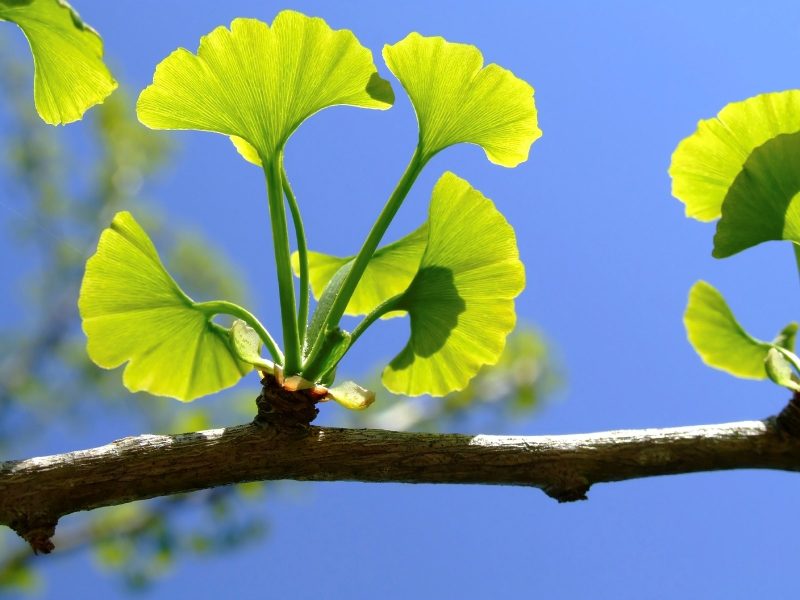
However, in earlier times, ginkgo grew north of China - on the territory of modern Siberia.
Ginkgo bilobate is a tree, from 30 to 50 m high, with dark green leaves, up to 12 cm long, and up to 8 cm wide, resembling fans in shape. In the cold season, the leaves fall.

By about the 25th year, you can distinguish whether the tree is male or female. On men’s you can see the “catkins”. Pollen matures in them. After pollination (in nature - with the help of wind), ovary forms on female trees.
Ginkgo can also be propagated using the accessory buds, which appear at the very bottom of the trunk.
Interesting facts about the plant
Naturally, a lot of myths and legends are associated with the glorious tree.

But less interesting are the most scientific facts about ginkgo biloba, a long-lived plant:
- Under favorable conditions, it can live up to 2500 years.
- Monks in China consider ginkgo biloba to be the yin and yang tree, a symbol of wisdom.
- The current name of the plant is not entirely accurate. Engelbert, a traveler from Germany, admired the hitherto unseen beautiful tree in the garden of the Japanese emperor, and wrote down its name in Latin letters, but not in Chinese, but in Japanese transcription.
- At home, in China, the fruits of the tree are called “silver apricots,” and their seeds are a delicacy. However, if you eat too many seeds, you can be poisoned.
- Even if grown ginkgo far from China, the plant will adapt to a different climate, and will not hurt. Yes there, these trees survived even the bombing of Hiroshima and remained intact.
- When the seeds ripen, an unpleasant odor can come from the tree. Therefore, in gardens and parks they prefer to plant male specimens.
- In Europe, the first ginkgo appeared in the 18th century.
Today, ginkgo biloba in the truest sense of the word is conquering the world thanks to its exceptionally useful qualities.
Beneficial features
The composition of leaves, berries and bark of ginkgo biloba includes a number of substances that are no longer found anywhere in nature. One of them is ginkolide, indispensable in the treatment and prevention of cardiovascular diseases. It strengthens the walls of blood vessels, makes them elastic, treats inflammatory processes.
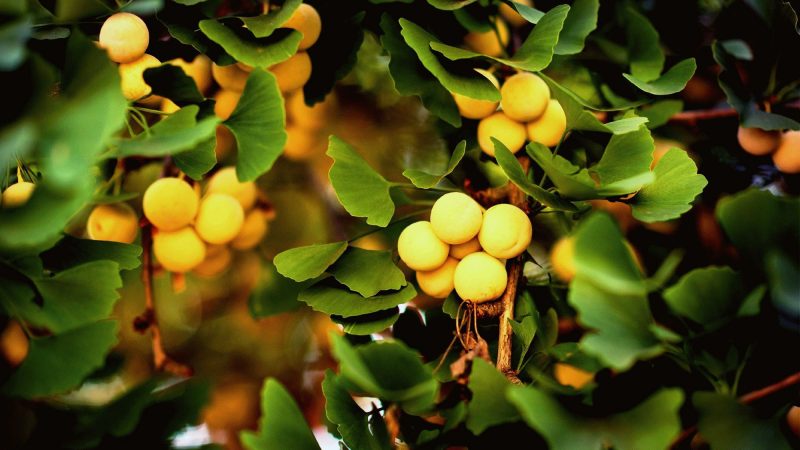
The beneficial properties of ginkgo biloba are widely known. It is no coincidence that a tree is distinguished by such longevity! Flavone glycosides have established themselves as one of the best antioxidants. When a person begins to consume them, his cholesterol level drops to optimal numbers, all the vital processes that occur in the body normalize.
Ginkgo biloba also includes phytosterol, calcium and its salts, phosphorus and many other useful substances.
Preparations made on the basis of ginkgo biloba have an extremely beneficial effect on the body. In a person who takes them, the pressure is always normal, the heart rate is stable, cholesterol plaques leave the vessels.
Cells receive the oxygen they need and begin to work fully. People improve their memory, clarity of thoughts appears, neurosis and insomnia recede.
Also, drugs can prevent airway spasms.
Medicinal use
The enthusiastic epithets “the tree of youth”, “the tree of life” are not accidentally addressed to ginkgo biloba. For the preparation of medicines foliage, berries, bark are used. Ginkgo extract provides invaluable assistance to people suffering from serious illnesses.
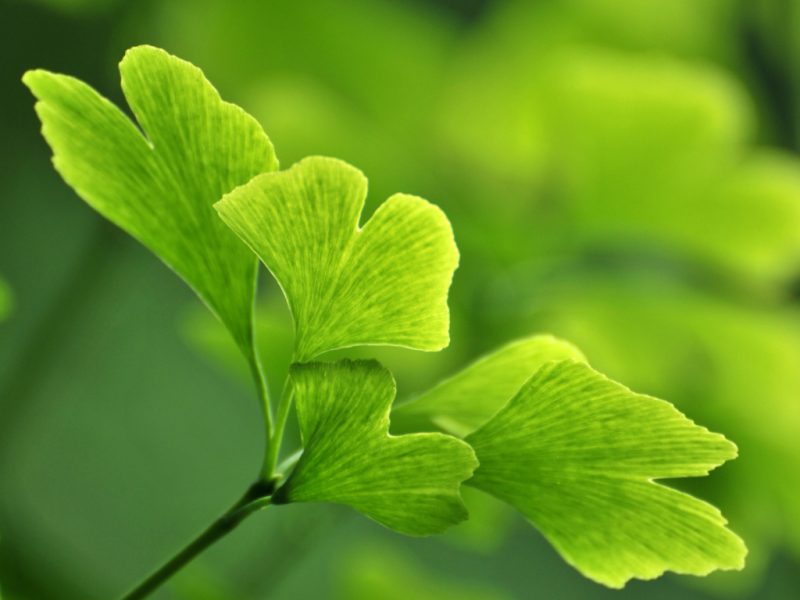
With painful dizziness, it is prescribed to take the extract for a week. Relief comes almost immediately. Unpleasant symptoms that have diminished the quality of life over the years are receding.
It is difficult to find a more effective way to deal with migraines. The extract helps even when strong modern drugs do not have a pronounced effect. There is no doubt that in the coming years new medicines for headaches will be developed, which will include ginkgo biloba extract (EHB).
EGB is also accepted by people suffering from impaired memory. They note that clarity of thoughts, sharpness of mind, and the ability to remember a large amount of information return to them. Conducting treatment courses, you can significantly delay the manifestation of symptoms of senile dementia in the elderly.
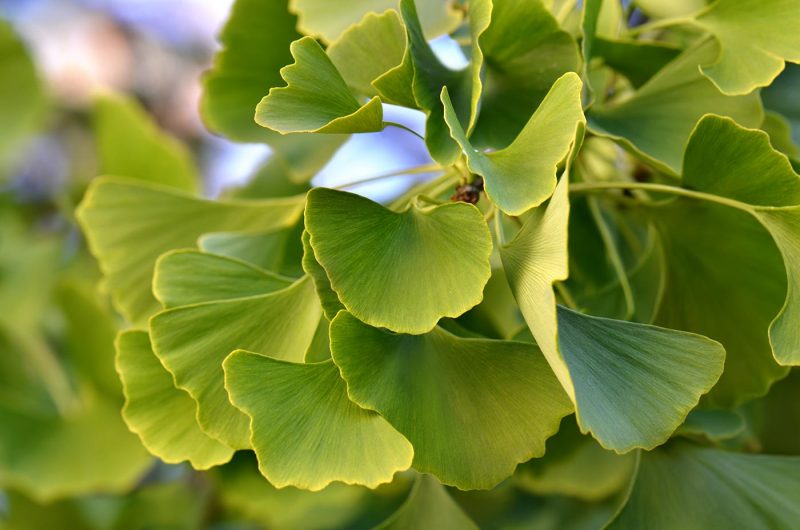
In addition, as part of complex therapy, the drug is prescribed if the patient has:
- noise in ears;
- insomnia;
- thrombophlebitis;
- pre-stroke condition;
- diabetes;
- varicose veins.
It is important to remember that you do not need to try to speed up the healing process by taking high doses of the drug. The body simply does not absorb the excess. So the dosage should be prescribed by the doctor.
Use in cosmetology
Ginkgo biloba extract is widely used in cosmetology. Due to the fact that it saturates the cells with oxygen, it promotes skin rejuvenation. It is added to creams, lotions, shampoos and other cosmetic products.

The substances that make up ginkgo have a number of invaluable properties:
- They help to preserve youth by slowing down the aging process.
- Protect from free radicals, tone and soothe the skin.
- Normalize blood circulation, and relieve swelling.
- Hair begins to look strong and healthy.
- The manifestations of cellulite are reduced.
Most often, the extract is added to the composition of cosmetics intended for women aged 45 years and older. But ginkgo will help even very young boys and girls with oily problem skin, suffering from acne. Appropriate cosmetics will remove inflammation, the skin will acquire a healthy look.
Contraindications
Some people have an allergy to ginkgo biloba. Therefore, it is important to find out this point before starting treatment. Also, allergic symptoms may occur if the extract is drunk for a very long time.
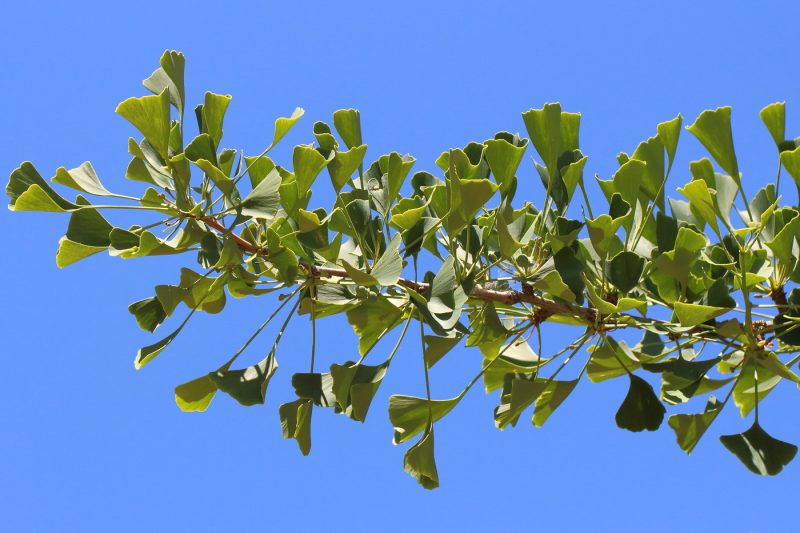
With caution, drugs that include ginkgo biloba are taken with thrombocytopenia (a reduced platelet count). And categorically they should not be used together with anticoagulants that affect blood coagulation.
Today it is not difficult to buy drugs in pharmacies that include ginkgo biloba. If the doctor gives the go-ahead - discover this amazing plant for yourself, evaluate its benefits.












